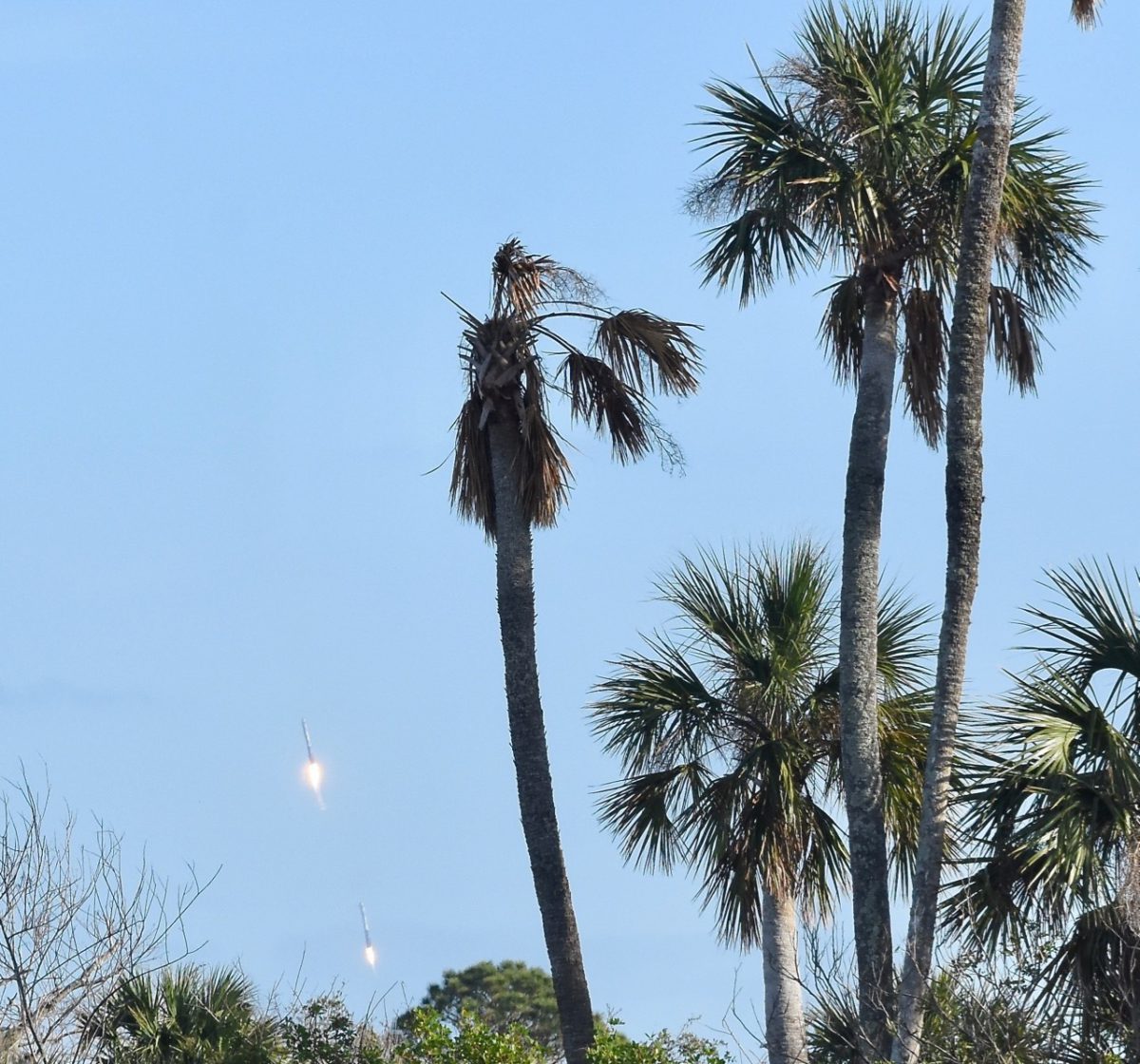Jason Davis • Feb 06, 2018
Falcon Heavy launches successfully!
SpaceX's Falcon Heavy rocket successfully launched on its maiden test flight Tuesday. Throughout the day, I updated this story as events unfolded. Scroll on for a recap, starting in the morning and ending with the final burn toward Mars.
11:15 a.m. EST
Hello from Kennedy Space Center! Today, SpaceX will attempt to launch its Falcon Heavy rocket on a demo flight. If you need to brush up on the flight, here are our previous articles:
Today's launch window opens at 1:30 p.m. EST. A SpaceX representative told us the live webcast will begin around 1:10 p.m. Here's the link for that, and here's a timeline of events, straight from the SpaceX press kit:
And here's a quick shot from the press site:
12:15 p.m. EST
The launch time has slipped to 2:20 p.m. EST due to upper-level winds. Today's launch window extends through 4:00 p.m. EST, according to SpaceX's press kit.
T-0 delayed to 2:20 p.m. EST, 19:20 UTC due to upper level wind shear. Continuing to monitor winds and will update as info becomes available.
— SpaceX (@SpaceX) February 6, 2018
Elon Musk tweeted a diagram of today's launch and landing sequence. Here it is:
1:45 p.m. EST
The upper-level winds at Cape Canaveral continue to be a problem, but controllers have set a launch time of 3:45 p.m. EST.
Clock is counting again in the press room, for now, approaching T-2 hours ¯\_(ツ)_/¯
— Jason Davis (@jasonrdavis) February 6, 2018
2:00 p.m. EST
We're pushing to 3:45 p.m. Stay tuned.
Launch auto-sequence initiated (aka the holy mouse-click) for 3:45 liftoff #FalconHeavy
— Elon Musk (@elonmusk) February 6, 2018
3:25 p.m. EST
SpaceX's webcast should be going live now. We've embedded the YouTube player here:
4:15 p.m. EST
SUCCESS! The Falcon Heavy's second stage and Tesla payload are now in Earth orbit. Liftoff occurred at 3:45 p.m. EST. Both of the Falcon Heavy side boosters successfully returned to Cape Canaveral for upright landings. The fate of the center core, which was supposed to land on the drone ship Of Course I Still Love You, is unclear. A flight controller said "we lost the center core" on the launch feed, but SpaceX has yet to clarify whether that meant the signal dropped, or if the booster crashed.
The second stage is on a six-hour coast before it re-lighting to propel the Tesla on to Mars.
In any case, it's safe to call the test flight a success. Congrats, SpaceX!



4:45 p.m. EST
Live views of the Starman, riding in the Tesla, orbiting Earth:
5:15 p.m. EST
An image of Starman over Australia:

8:00 p.m. EST
Elon Musk held a press conference this evening with reporters at Kennedy Space Center:

Here's a Twitter thread recapping the highlights (I was wrong about the live stream, by the way; ABC had one):
Press conference with Elon Musk starting. Sadly, no public stream but the room is packed with tweeting space reporters pic.twitter.com/XXc6TtnpOn
— Jason Davis (@jasonrdavis) February 7, 2018
And a clarification on the fate of the center core:
Musk clarifies center booster landing: We hit the water at about 500 kph, about 100 meters from ship. Was enough to take out two drone ship thrusters and shower the deck with shrapnel (says he's still waiting on full confirmation of that)
— Jason Davis (@jasonrdavis) February 7, 2018
And the mission patch!
Mission patch and Starman, as the post-launch timer continues to tick pic.twitter.com/kalo4MDzP6
— Jason Davis (@jasonrdavis) February 7, 2018
9:00 p.m. EST (final update)
After a six-hour coast, the upper stage re-lit its engine to kick out of Earth orbit and on to Mars.
Third burn successful. Exceeded Mars orbit and kept going to the Asteroid Belt. pic.twitter.com/bKhRN73WHF
— Elon Musk (@elonmusk) February 7, 2018
As an added bonus, the final burn occured over SpaceX headquarters in Southern California. It was visible in other regions of the southwest, too: The MMT Observatory in Arizona captured this view with their all-sky camera:
the #spacex solar orbit insertion burn as seen from @mmtobservatory... pic.twitter.com/3KOHgOltiS
— Timothy Pickering (@te_pickering) February 7, 2018
The Time is Now.
As a Planetary Defender, you’re part of our mission to decrease the risk of Earth being hit by an asteroid or comet.
Donate Today

 Explore Worlds
Explore Worlds Find Life
Find Life Defend Earth
Defend Earth




